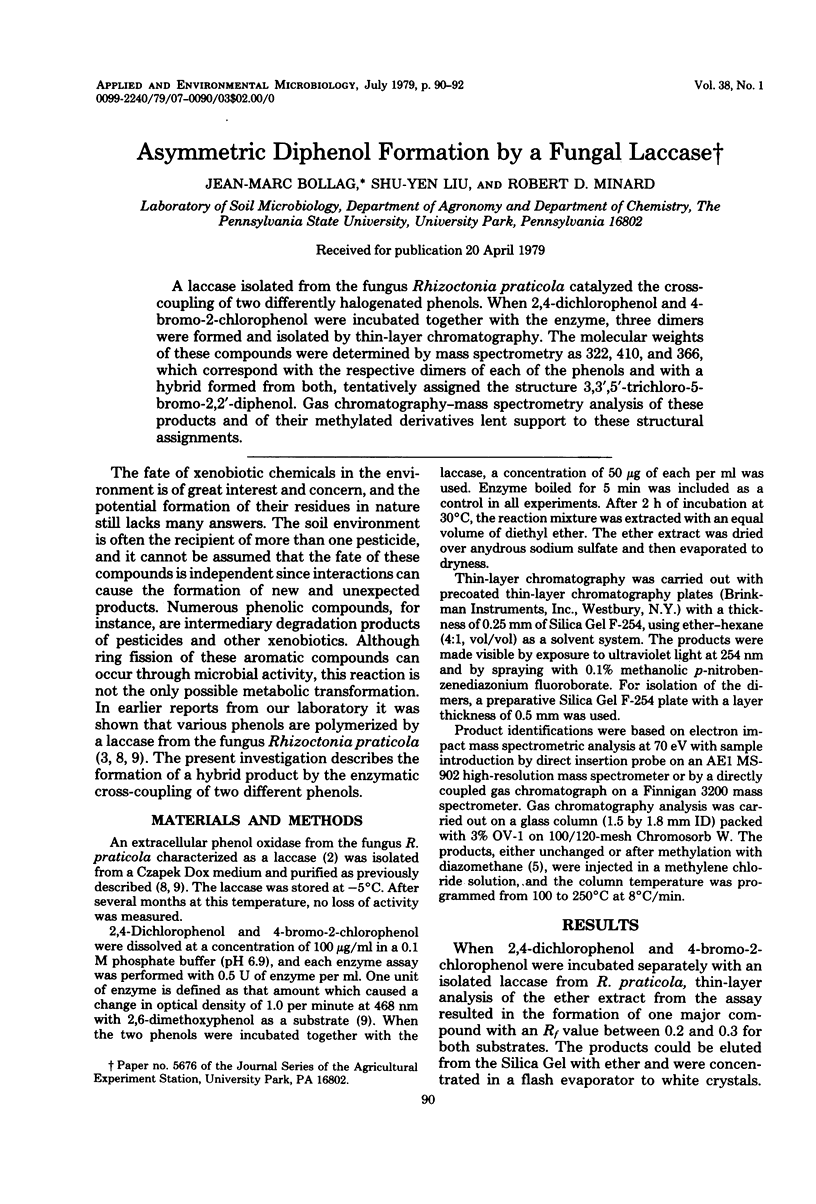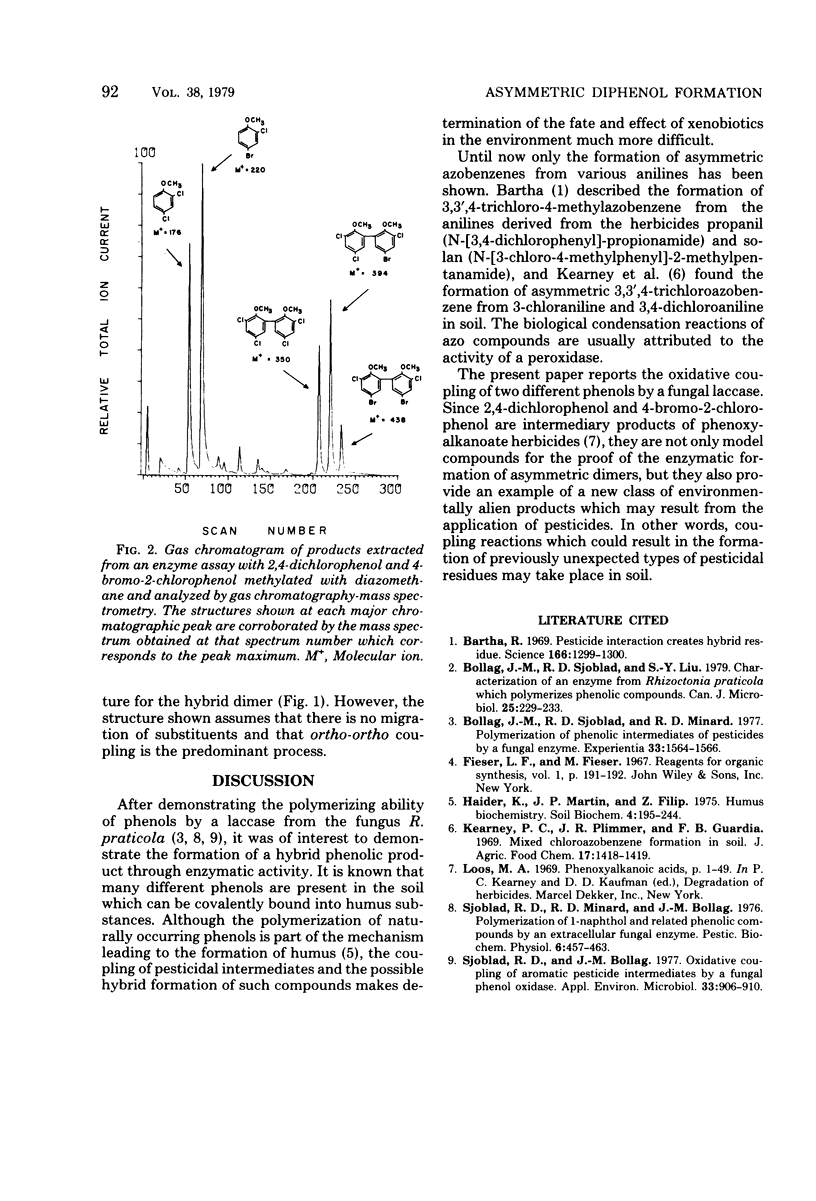Abstract
A laccase isolated from the fungus Rhizoctonia praticola catalyzed the cross-coupling of two differently halogenated phenols. When 2,4-dichlorophenol and 4-bromo-2-chlorophenol were incubated together with the enzyme, three dimers were formed and isolated by thin-layer chromatography. The molecular weights of these compounds were determined by mass spectrometry as 322, 410, and 366, which correspond with the respective dimers of each of the phenols and with a hybrid formed from both, tentatively assigned the structure 3,3',5'-trichloro-5-bromo-2,2'-diphenol. Gas chromatography-mass spectrometry analysis of these products and of their methylated derivatives lent support to these structural assignments.
Full text
PDF


Selected References
These references are in PubMed. This may not be the complete list of references from this article.
- Bartha R. Pesticide interaction creates hybrid residue. Science. 1969 Dec 5;166(3910):1299–1300. doi: 10.1126/science.166.3910.1299. [DOI] [PubMed] [Google Scholar]
- Bollag J. M., Sjoblad R. D., Liu S. Y. Characterization of an enzyme from Rhizoctonia praticola which polymerizes phenolic compounds. Can J Microbiol. 1979 Feb;25(2):229–233. doi: 10.1139/m79-035. [DOI] [PubMed] [Google Scholar]
- Bollag J. M., Sjoblad R. D., Minard R. D. Polymerization of phenolic intermediates of pesticides by a fungal enzyme. Experientia. 1977 Dec 15;33(12):1564–1566. doi: 10.1007/BF01933998. [DOI] [PubMed] [Google Scholar]
- Sjoblad R. D., Bollag J. M. Oxidative coupling of aromatic pesticide intermediates by a fungal phenol oxidase. Appl Environ Microbiol. 1977 Apr;33(4):906–910. doi: 10.1128/aem.33.4.906-910.1977. [DOI] [PMC free article] [PubMed] [Google Scholar]


